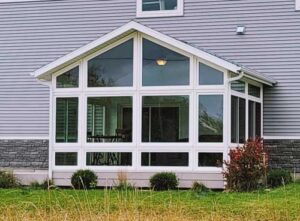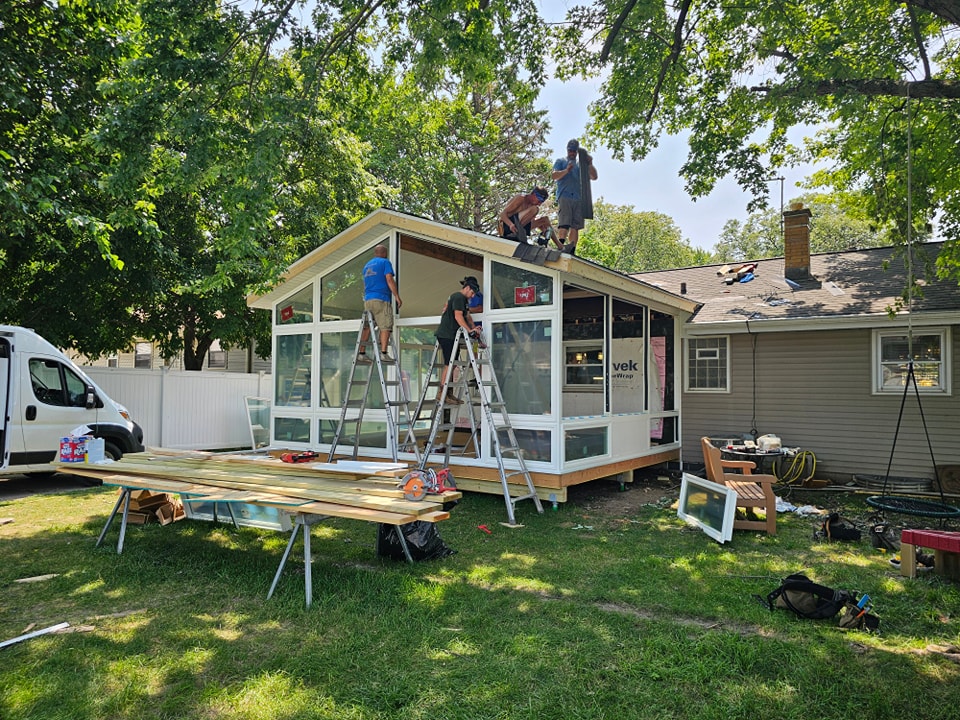
Lessons from the Field in Southeast Wisconsin
Most people picture a sunroom as morning light, green views, and four chairs around a quiet table. The rooms that actually deliver that experience—year after year, through lake-effect snow and July humidity—are the product of careful engineering, disciplined materials choices, and crews who know how to tie a new structure into an old one without compromise. After more than 50 years in the trade, our takeaway is simple: the details you don’t see are the ones that decide whether your sunroom feels effortless—or becomes a seasonal compromise.
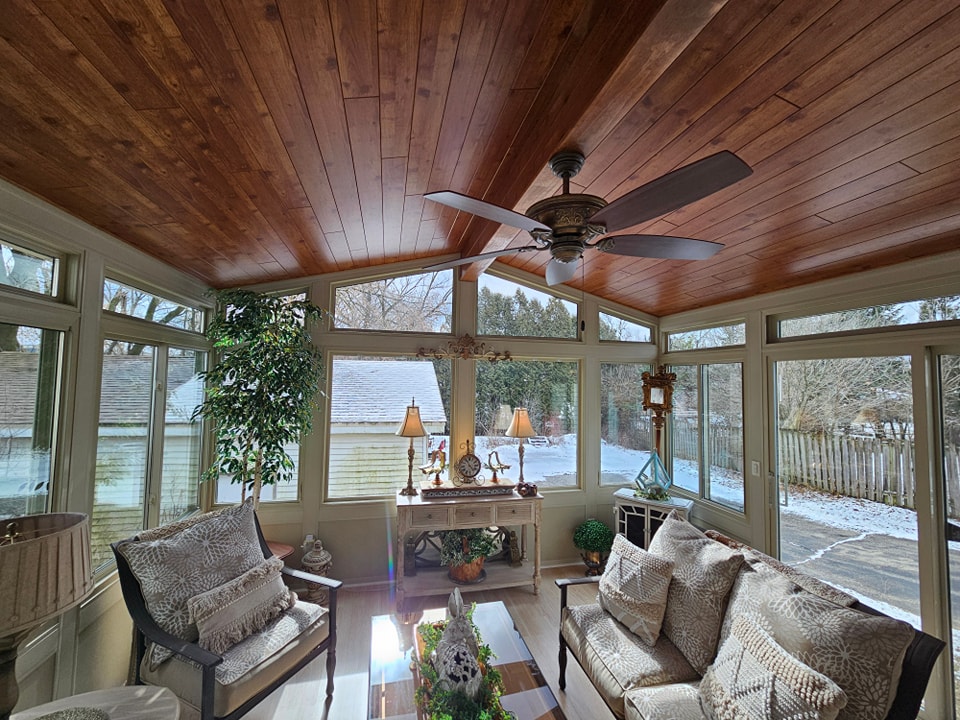
From Traditional Builds to Pre-Engineered Systems
Our story began in Twin Lakes, Wisconsin, where my father built lake homes and, eventually, custom sunrooms the old-fashioned way: stick-framed walls, conventional headers, and trim carpentry that blended with the house. Structurally, those rooms were sound. But evolving codes insisted on heavier headers and wider framing between openings. The more we did to satisfy structure, the more glass we gave up. Homeowners weren’t asking for more wall. They wanted sky-wide views.
Pre-engineered systems promised exactly that—slender posts, broad spans of glass, faster installs. They also introduced a set of realities that, in retrospect, explains a lot of what homeowners still complain about in older rooms: thermal bridging through aluminum, condensation at frames, field-cut components that never quite fit like the drawings, and the slow creep of freeze-thaw fatigue on exposed fasteners.
The Stagnation Problem
During the efficiency push of the 1980s, sunrooms dodged the strictest energy rules because a door typically separated them from conditioned space. Without regulatory pressure, too many manufacturers kept building to 1970s assumptions. The formula barely changed: thin-gauge aluminum posts, starter channels, foam-core “fill” panels where glass would have been, and on-site cutting to make the kit fit the house instead of the other way around.
In a four-season climate like Southeast Wisconsin, those shortcuts add up. Aluminum’s high conductivity moves winter cold straight through the frame. Small exterior screws corrode, loosen, and streak posts. Field-cut openings invite tolerance stack-ups, sloppy seals, and warranty gray areas when a locally sourced trapezoid doesn’t match the factory’s glazing system. Homeowners experience the symptoms—drafts, fogged panes, seasonal “hot box”—without ever seeing the root causes.
Red Flags We Learned to Spot (and Eliminate)
Exposed fastening as weather line
If you can see the screws, the weather can, too. Freeze-thaw cycles and road-salt moisture accelerate corrosion and loosening.
Fill panels where view should be
Using stock window sizes and “filling” the rest with insulated panels robs the room of glass—the reason you built it.
Field improvisation
When installers are cutting structural openings or ordering glass on the fly, quality and liability both drift.
The net effect isn’t just cosmetic. It affects U-values, air-water-vapor control, and ultimately whether you’ll actually use the room in January.
A New Approach
Engineered Like the Rest of the House
After building (and repairing) plenty of aluminum systems, we moved to Living Space Sunrooms, a platform designed in the 2000s with modern building science in mind.
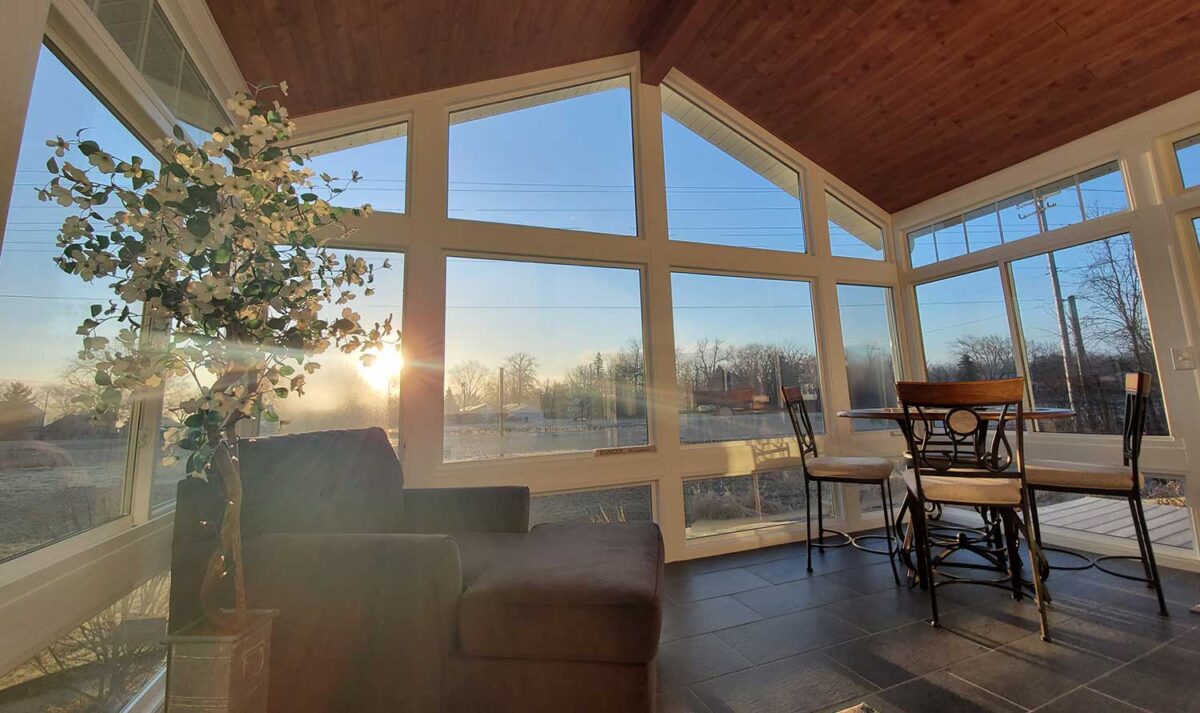
What’s materially different—and why it matters here:
- Non-conductive frame chemistry. PVC to the exterior and fiberglass to the interior tame thermal bridging, cutting conductive heat loss in winter and radiant gain in summer. Paired with warm-edge spacers and Low-E 366 insulated glass, it’s a measurable comfort upgrade.
- Factory precision, not field guesswork. Openings are CNC-cut to the project, not cut around on site. That means consistent reveals, tighter gasketing, and a cleaner air-water seal.
- Custom glass as the default. Trapezoids, transoms, kick panels—made for the opening with matching frames and coatings. No “close enough” substitutions.
- Screwless interior fastening. Connections are hidden and protected from weather. You get clean lines and no rusting fastener heads telegraphing through the finish.
The outcome is a sunroom that behaves like a real addition, not an enclosure—a meaningful distinction when you’re facing sub-zero wind chills in February and 90° dew points in July.
Climate Reality Check
Building for Southeast Wisconsin
Designing for our region means respecting four things: snow load, frost, humidity, and shoulder-season sun.
- Structure & snow. Roof systems must be engineered for regional snow loads without dumping that load into the house connection. We use insulated structural roofs with proper load paths and ice-and-water protection at tie-ins, plus step-flashing details that are friendly to future reroofs.
- Foundations that don’t heave. Full slabs work; so do helical piers with insulated floor assemblies when soils or budgets suggest a lighter touch. What matters is getting below frost, controlling ground moisture, and insulating the floor so January doesn’t come up through your socks.
- Moisture & condensation control. Thermally broken frames, airtight interior finishes, and smart ventilation (operable windows, a ceiling fan, and, when conditioned, a dedicated return path) keep panes clear and mold at bay.
- Glass that works for you. Low-E coatings and argon-filled IGUs tame summer gain without killing winter sun. Add shades or UV-protective films where furnishings sit in direct light.
For many homeowners, the most elegant mechanical solution is a ductless cold-climate heat pump sized for the room—quiet, efficient, and independent of the main system. Others prefer baseboard or a small gas fireplace for winter resilience. The right choice is the one that matches your usage pattern and envelope performance.
Integration Is a Craft, Not a Line Item
Materials don’t build lasting rooms—crews do. Our installers come from custom homebuilding. That matters when you’re carving an opening in an existing wall, marrying new roof geometry to old soffits and fascia, or aligning siding coursing so the addition reads “original.” It’s also why we keep an in-house team rather than scaling up seasonally. Continuity shows up in the finish: straight reveals, square corners, and trim details that look like they’ve always belonged.
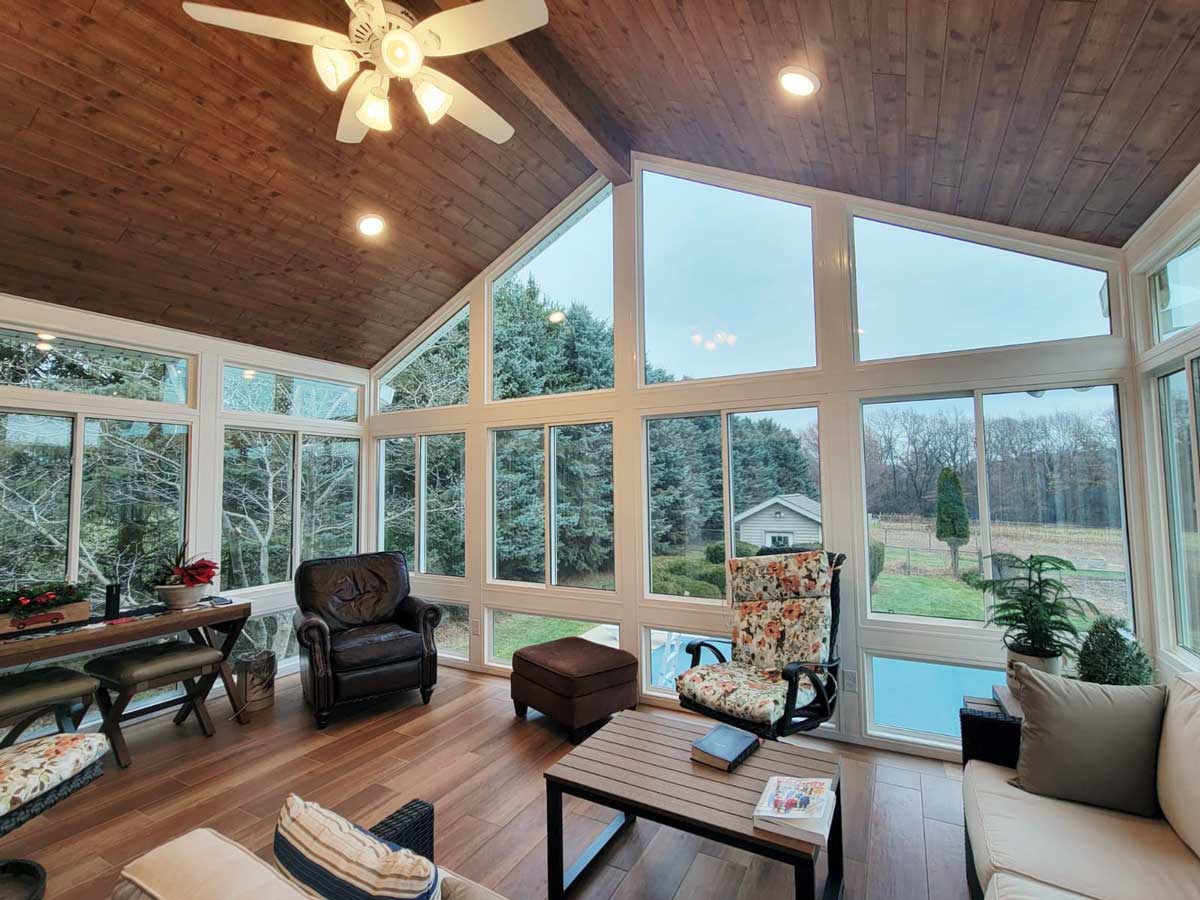
Key integrations homeowners rarely see—but feel every day:
Continuity of control layers
The sunroom’s water-resistive barrier, air barrier, and insulation align with the home’s existing layers. That keeps drafts out and energy in.
Door and threshold transitions
We treat these like exterior entries—pan flashing, back dams, and sealant sequencing that survives wet boots and melted snow.
Electrical and lighting planned for use
Plenty of outlets on solid knee walls, dimmable recessed cans for evening, and a fan box centered to move both summer and winter air.
The Glass Question: Why So Much Talk About Coatings?
Because glass is the weakest thermal link—and the primary reason to build the room. We spec Low-E 366 (a triple-silver coating) for balanced performance: ample visible light, strong UV rejection to protect floors and fabrics, and excellent winter retention of interior heat. Warm-edge spacers reduce edge-of-glass condensation, and proper weep paths ensure any incidental moisture gets out, not in. The point isn’t alphabet soup; it’s comfort you can feel at 6:30 a.m. in January without a robe and slippers.
Three-Season or Four?
Both have a place. A three-season room is a joy from April through October and can be kept simpler—less insulation, no tied-in HVAC, lighter foundations when appropriate. A four-season room earns its keep year-round with fully insulated walls, roof, and floor; high-performance glazing; and a dedicated heating/cooling strategy. The deciding factor isn’t a price sheet so much as how you intend to live in the space. If you want coffee with the first snowfall, build it like the rest of the house.
Accountability You Can See
Hidden fasteners aren’t just pretty; they protect the structure from the weather that ruins it. Factory-cut openings aren’t just tidy; they keep tolerances tight so gaskets seal and glass stays clear. Non-conductive frames aren’t trendy; they’re what keeps your elbows warm on a January afternoon.
Those are the quiet differences we’ve invested in. They’re also why our rooms don’t rattle in March winds or fog up when dinner’s in the oven and the Packers are on.
Looking Ahead
To date, we’ve built more than 450 Living Space Sunrooms across Southeast Wisconsin. The through-line in those projects isn’t a signature look; it’s a standard of construction. Build with materials that respect our climate. Engineer for snow, frost, and humidity. Integrate the addition so it reads original. And send a crew that treats control layers and flashing with the same care they give casing and crown.
Do that, and a sunroom stops being “extra.” It becomes the room the rest of the house envies.

